Trauma exerts a profound influence that affects many of us, whether we are conscious of it or not. It often disguises itself behind physical, emotional, or behavioural signals, leaving its true weight unrecognised. Understanding the roots and influence of trauma isn’t just important for professionals; it’s essential for everyone in society. By developing a collective awareness of trauma’s impact, we can work together to promote healing, resilience, and support for those who have experienced trauma and also participate in stopping the transmission of trauma. This inclusive approach enables us to build a more compassionate and understanding community, fostering individual and collective growth.
Trauma casts long shadows on our bodies, perceptions, emotions, beliefs and relationships, sometimes persisting for years. It keeps us in a state of perpetual readiness—ready to fight, flee, freeze or fawn—making it harder to fully experience life’s joys and connections with others.
In this article, we’ll begin by exploring what trauma is, the different types of traumas, and look further into its impact on our mental health and behaviours. We’ll provide practical insights into understanding and identifying triggers, as well as how to seek help when we are ready for it.
Table of Contents
What is Trauma?
Trauma is an unseen wound, an emotional reaction to a distressing experience. Trauma stems from exposure to emotionally disturbing or life-threatening incidents, leaving profound and lasting impacts on mental, physical, and emotional wellbeing. What is traumatic also depends on our vulnerability. For example, what is traumatic for a child such as criticism, put-downs and neglect, might not be traumatic for an adult. Peter Levine defined trauma as “anything that is too much, too soon, or too fast for our nervous system to handle, especially if we can’t reach a successful resolution.”
The Importance of Addressing Trauma
Unresolved trauma can lead to many mental health challenges, including post-traumatic stress disorder (PTSD), Complex PTSD, anxiety disorders, addictions, eating disorders, and depression. The landmark ACE Study and the Philadelphia Urban ACE Study underline the profound impact childhood exposure to stressful or traumatic experiences has on subsequent physical and mental health conditions.
Individuals who experience childhood trauma often demonstrate changes in brain functioning compared to those without such experiences. Their brains, accustomed to near-constant stress, can process information differently and may react sensitively to situations that seem ordinary and benign to others. These changes can make it difficult to sustain positive relationships, regulate emotions, and impact their performance in educational and professional settings. The specific impact of trauma can vary from person to person, and the degree of change in brain functioning may also vary based on the severity and duration of the trauma.
So, what does this mean for you? Choosing a trauma-informed approach gives you a powerful hand in your healing. It’s about forging connections with healthcare providers based on trust and understanding. This choice leads to more than just better long-term outcomes—it brings a sense of empowerment and control over your journey to recovery. And let’s not forget that it also means those providing care are less likely to face burnout, creating an environment that truly supports your wellbeing.
The Impact of Trauma on Mental Health
The effects of traumatic events reach individuals, families, and communities on a profound level. While some may navigate these experiences with resilience, emerging unscathed, others may grapple with lasting traumatic stress reactions. These effects can manifest subtly, insidiously, or in overtly disruptive ways. They are influenced by a range of factors, including individual characteristics, the nature of the event, developmental processes, the impact of trauma, and sociocultural elements.
Here are some common effects of trauma:
- Flashbacks: Vividly reliving aspects of a traumatic event, feeling as if it’s transpiring in the present moment, even without specific recall of details.
- Intense Anxiety: Strong and immediate responses to stimuli that reminds them of past traumatic events. Trauma survivors can develop a heightened sensitivity to specific triggers, and encountering these triggers may induce overwhelming anxiety.
- Dissociation: A coping mechanism for overwhelming stress, leading to feelings of detachment, spaciness, numbness, or a sense of unreality.
- Hyperarousal: Persistent anxiety, a constant state of vigilance, and difficulty in achieving relaxation.
- Sleep Disturbances: Difficulty falling or staying asleep, feeling unsafe at night, and experiencing anxiety or fear of nightmares.
- Low Self-esteem, Self-Blame and Guilt: Altered self-perception and valuation due to the trauma’s impact.
- Avoidance Behaviours: Individuals affected by trauma may develop avoidance behaviours, steering clear of situations, places, or people that might trigger anxiety or panic attacks.
Understanding Trauma Triggers
After experiencing trauma, survivors frequently encounter stimuli or circumstances that can evoke profound emotional reactions. These triggers, though diverse, share a common potential to reawaken distressing memories and emotions tied to the traumatic incident. Understanding and effectively managing these triggers is an essential step of the healing process.
What are Trauma Triggers?
A trauma trigger can be an ordinary, everyday life experience that reminds the survivor of the trauma, transporting them back to a painful and traumatic memory, eliciting potent emotional responses, difficult thoughts and body sensations. A trauma trigger can also be implicit, which means that an affected person might not be consciously aware of the trigger and its connection to trauma.
Triggers may induce feelings of being vulnerable, small, little, stuck, and hopeless. Some may experience similar sensations as during the actual traumatic event.
Examples of Trauma Triggers
Navigating complex emotions often feels like a turbulent journey. When our emotional triggers are activated, our responses can range from defensiveness to outright hostility. It’s important to understand why this happens.
In an ideal scenario, during our formative years, parents served as emotional guides. They acknowledged our feelings with statements like “I see you’re angry” or “I see you’re upset,” and taught us how to navigate them. This is where we acquired the invaluable skill of self-soothing—a means to calm down and regain a sense of security.
However, not everyone receives this emotional education. Consequently, when triggered, individuals may find themselves engulfed in a surge of emotions and thoughts, potentially leading to:
- Expressing their feelings in hurtful ways towards others
- Seeking solace in substances such as medication, alcohol, or drugs
- Completely withdrawing from the situation
Navigating Emotions: The Trigger Effect
Sounds: Specific sounds like sirens or gunshots can trigger intense responses, even in a safe environment.
Sights: Seeing something reminiscent of the traumatic event, for example, a similar car after a car accident.
Smells: Certain smells linked to a traumatic event can evoke powerful memories and emotions.
Situations: Certain situations, for example, speaking to an authority figure or experiencing rejection, can evoke strong emotional responses.
Emotions: Certain emotions associated with the trauma, for example, feeling helpless and vulnerable, similar to emotions occurring during the traumatic event, can cause emotional flooding and overwhelm.
Strategies to Mitigate Trauma Triggers
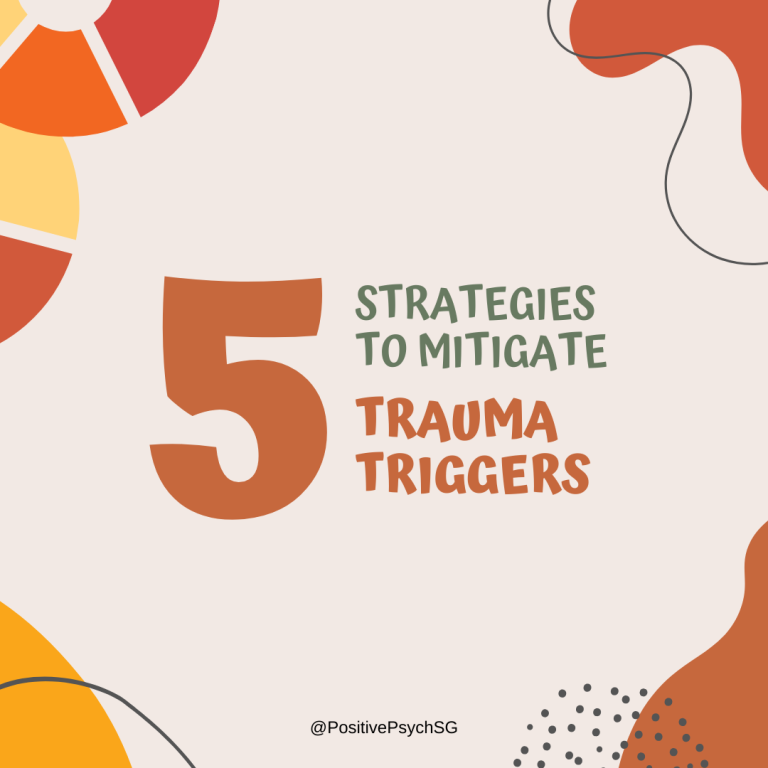
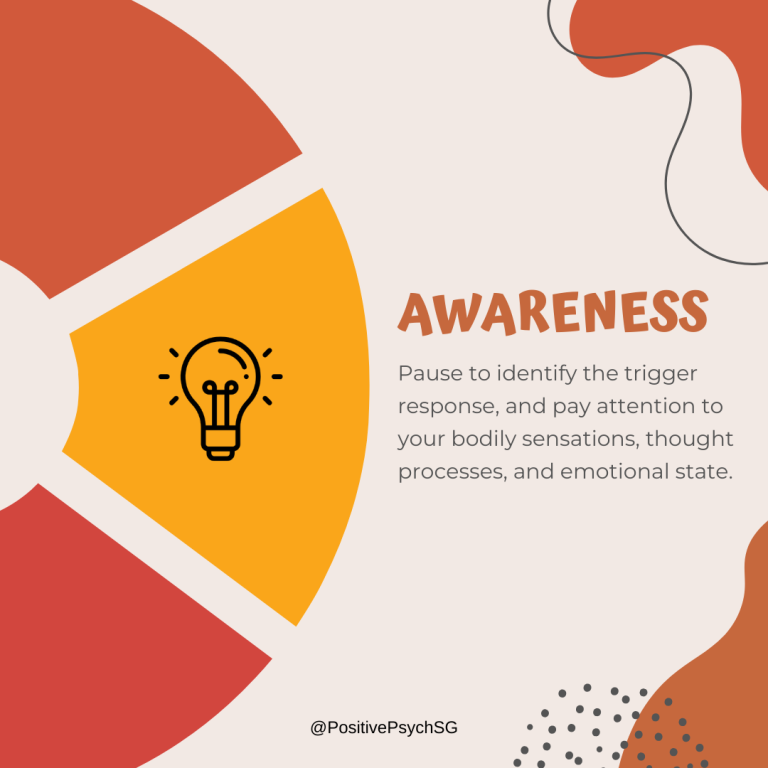
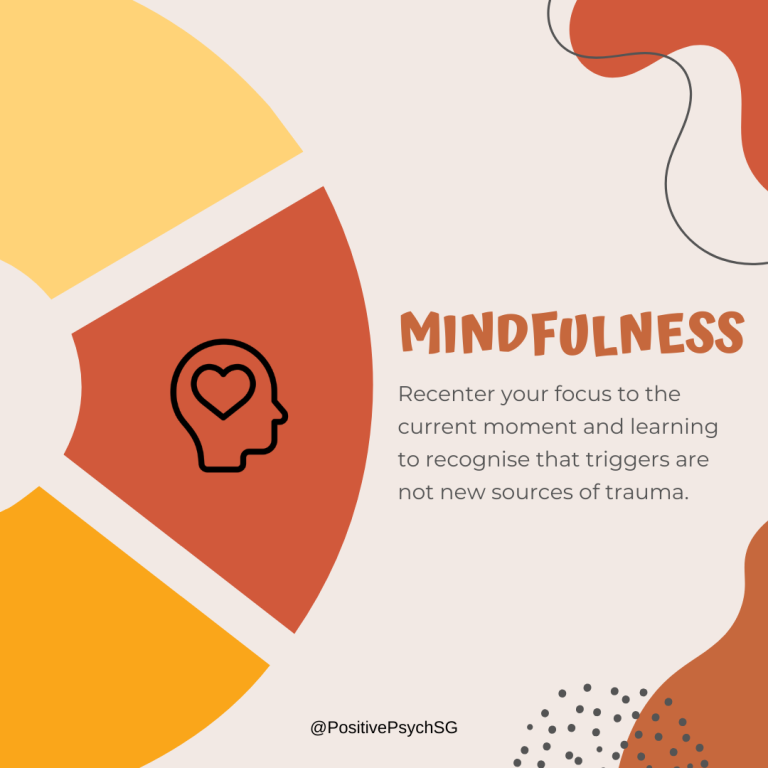
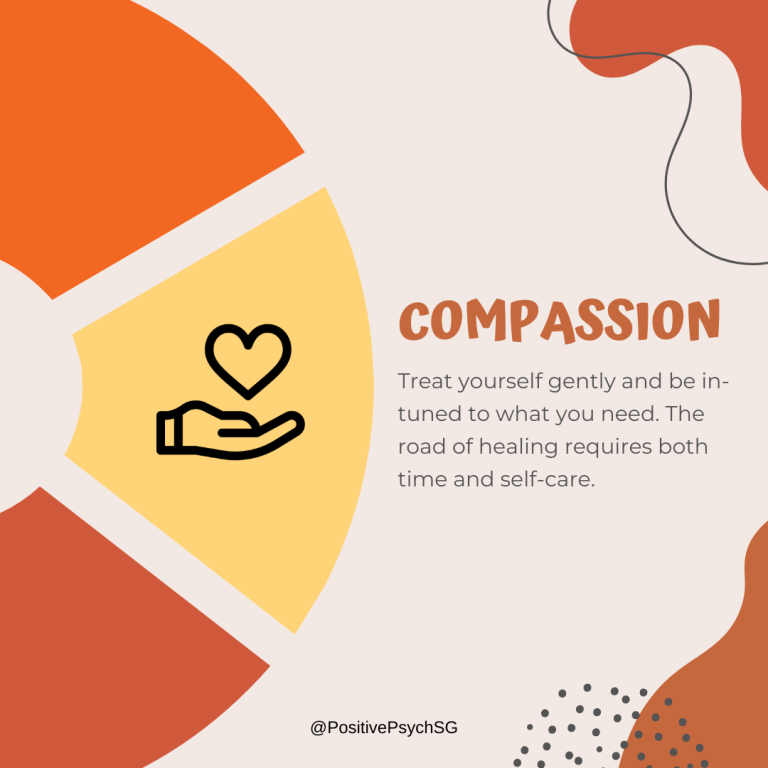
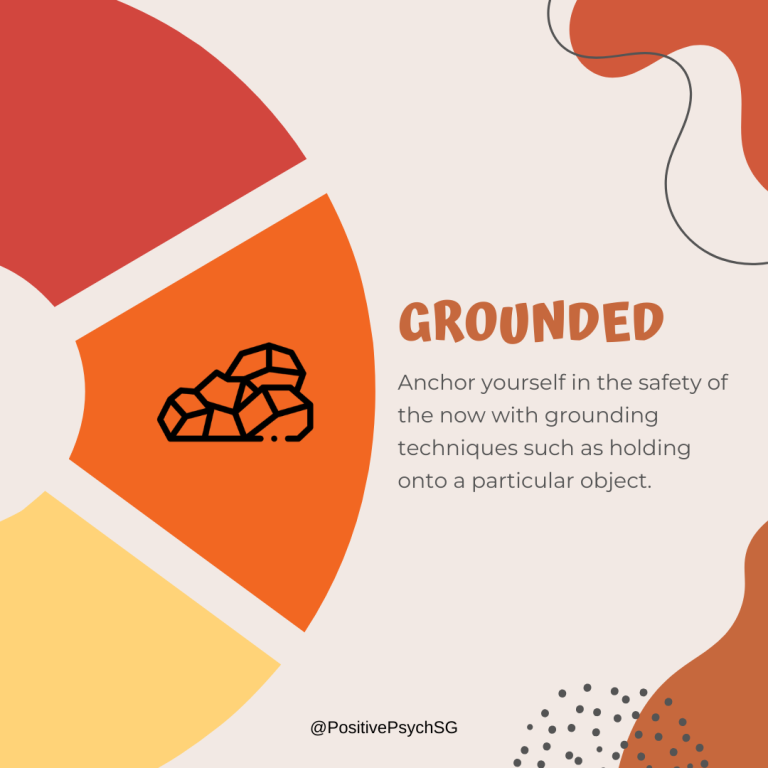
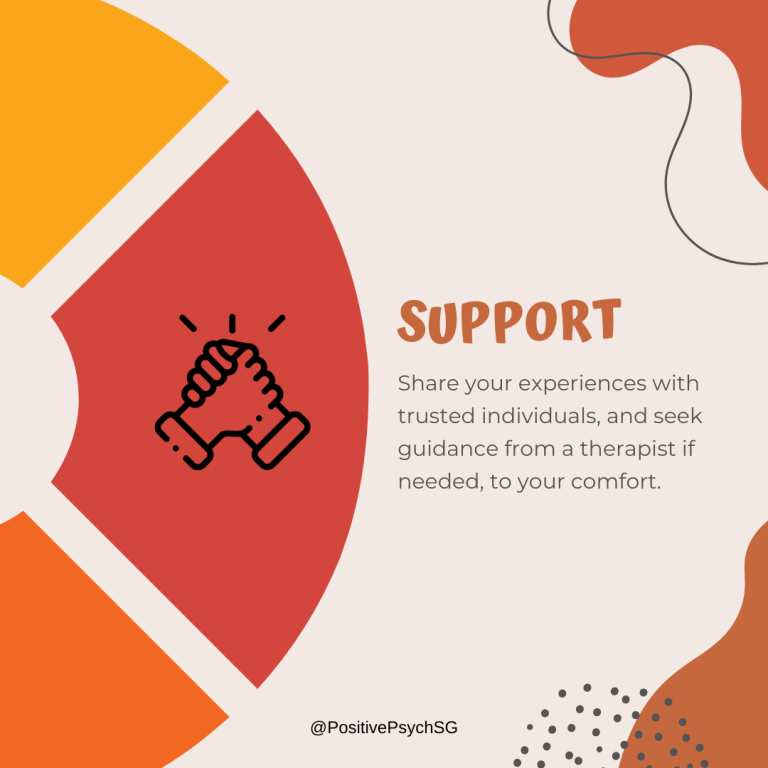
With practice and time, it becomes possible to effectively manage your response to triggers, reducing their disruptive impact. Here are some strategies to help mitigate the effects of a trigger:
Cultivate Awareness: When you sense a trigger response, take a moment to identify it. Determine whether it arises internally or externally. Pay attention to your bodily sensations, thought processes, and emotional state. Journaling is a helpful tool in this process.
Practice Mindfulness: This complements the previous point. It involves bringing your focus to the present moment. Triggers tend to pull us back into the past. Being able to recenter yourself in the current moment is crucial in preventing a rehashing of the traumatic experience. This practice reinforces the understanding that a trigger is just that—a trigger—and not a new source of trauma. This aids in calming both your mind and body.
Show Yourself Compassion: You are in the process of healing from a significant psychological injury. This journey requires both time and self-care. Treat yourself gently as you navigate through this process. Tune in to what you need and what helps alleviate stress. Prioritise this form of self-care, especially when you anticipate encountering a triggering situation.
Stay Grounded: Anchor yourself in the safety of the present moment. Use grounding techniques such as listening to a comforting song, seeking physical contact with someone you trust, or holding onto a particular object. Think of these methods as ways to swiftly guide your mind back into the present.
Seek Support: Healing from trauma, much like recovering from a physical injury, is most effectively done with the guidance of healthcare professionals and the support of loved ones. Share your experiences with trusted individuals as much as you’re comfortable with. Don’t hesitate to seek guidance from a therapist when needed.
Types of Trauma
In the world of trauma, it’s important to recognise that not all experiences are the same. The response to a traumatic event can vary greatly between individuals. Many factors, for example, the type of trauma, previous traumas, and social support available, can affect how a person responds to trauma. Let’s go into the distinction between Single-Incident and Complex Trauma, also known as Type 1 and Type 2 Trauma.
Single-Incident Trauma (Type I)
A Single incident or ‘Type I’ trauma relates to an unexpected and `out of the blue’ overwhelming event. Some symptoms can be intrusive memories, emotional numbing, memory difficulties, and heightened arousal responses.
Some examples of Type 1 trauma include:
- Severe illness or injury
- Violent assault
- Sexual assault
- Traumatic loss
- Mugging or robbery
- Being a victim of or witness to violence
- Road accident
- Hospitalisation
Complex Trauma (Type II or small-T)
By contrast, complex (`Type II’ or `small-T’) trauma is cumulative, repetitive, occurring over an extended period and often in interpersonal contexts. For example, during childhood or within a partnership.
Those affected by complex trauma often exhibit additional symptoms not covered by a PTSD diagnosis, such as emotional dysregulation, interpersonal difficulties, and negative self-concept. Complex post-traumatic stress disorder (CPTSD) has gained recognition as a diagnostic category in the International Classification of Diseases, 11th Edition (ICD-11), but it has not been incorporated into the Diagnostic and Statistical Manual of Mental Disorders (DSM)
Some examples of Type 2 trauma include:
- Domestic violence
- Emotional and physical neglect
- Abandonment
- Verbal abuse, put-downs
- Bullying that occurs at home, school, or work
- Sexual abuse
- Parental fighting
Understanding Complex Trauma
Complex trauma is a range of experiences where children are exposed to multiple, cumulative and repetitive adverse experiences often of interpersonal nature. Given the developmental stage of the child, these experiences can lead to profound and lasting effects, disrupting various aspects of a child’s development, including the formation of their sense of self. These experiences include Type 2 traumas described above. Since adverse experiences often involve a caregiver, they hinder the child’s ability to establish a secure attachment, a vital source of safety and stability for healthy physical and mental growth. Both children and adults can be affected by complex trauma.
Complex trauma causes enduring challenges in both physical and mental health. It is linked to a variety of psychological difficulties including addictions, self-harm, depression, and anxiety and physical problems such as chronic pain, diabetes, and cardiovascular conditions.
Characteristics of Complex Trauma
Some key characteristics of complex trauma include:
Dysregulation of Emotions: Those who have experienced complex trauma often struggle with regulating their emotions. This results in intense mood swings and difficulties in maintaining stable emotional states.
Attachment Difficulties: Trust and forming secure attachments can be especially challenging for individuals who have experienced complex trauma. This impacts their ability to establish healthy and meaningful relationships.
Altered Perception of Self and Others: Complex trauma may lead to a distorted sense of self-worth and a skewed understanding of others’ intentions and motives.
The Role of Trauma-Informed Therapists and Counsellors
Traumatic experiences frequently occur within the context of relationships. When someone we trust inflicts harm, it leads to negative shifts in our perception of ourselves and the world. Trauma-informed therapists are acutely aware of this dynamic and go to great lengths to ensure that their clients are not re-traumatised. They provide a safe space for clients to express their feelings without fear of judgement or rejection.
Healing is most likely to occur when individuals are allowed to experience safety and care under the guidance of an expert who understands the intricacies of trauma, attachment problems and emotional dysregulation. A trauma-informed therapist typically undergoes advanced training in trauma treatment and holds extensive experience in assisting those who have endured trauma.
Trauma-informed therapists concentrate on forging a robust therapeutic alliance grounded in safety and connection. They employ evidence-based approaches to support your recovery journey.
Five Key Principles of Trauma-Informed Care
Safety: It starts at the front door, ensuring privacy, a welcoming atmosphere, and a focus on the physical and emotional safety of every client. Clear communication about the process is prioritised.
Choice: Clients have control over their care with continuous informed consent.
Collaboration: The therapist empowers the client to share decision-making power regarding treatment goals, recognising clients as the experts in their care.
Trustworthiness & Transparency: Honest, clear, and consistent communication, along with respecting boundaries and maintaining trust.
Peer Support: This values the importance of peer connection, particularly for trauma survivors. It respects their wellbeing and allows them to take charge of their recovery journey.
Therapeutic Approaches for Complex Trauma
Each person’s experience of trauma is unique, and what proves effective for one individual may not yield the same results for another.
Encouragingly, as our understanding of complex trauma deepens, so does the range of available treatment options. The primary objective of each of these options is to facilitate a corrective emotional experience that fosters healing.
Here are some therapies for complex trauma:
Eye Movement Desensitisation and Reprocessing (EMDR): This treatment involves guided reprocessing of traumatic events coupled with bilateral stimulation to integrate memory networks, form new perspectives, and establish healthier beliefs.
Internal Family Systems (IFS): Through this approach, individuals learn to listen and integrate various parts of themselves.
Somatic (Body) Therapies: These therapies acknowledge that trauma is mainly remembered through the body due to how it is encoded in the brain. Through various techniques, therapists are teaching clients how to feel safe in their bodies.
Dialectical Behavioral Therapy (DBT): Particularly effective for individuals with borderline personality disorder (BPD), which shares similarities with complex trauma, DBT imparts skills in mindfulness, relationship skills, radical self-acceptance, and distress tolerance.
Healing and Growth
Your journey towards healing is personal, and it’s important to know that you’re not walking this path alone.
This journey is deeply personal, and having compassionate guidance can make a world of difference. A trauma specialist, well-versed in this process, can be a valuable companion on your recovery journey. This may involve practices like self-compassion, setting boundaries, and reclaiming control over your wellbeing.
Seeking therapy for your trauma is an act of courage and self-compassion.
Recognising your trauma and understanding its impact is the first step towards your healing. Reaching out for support, whether from professionals or a close-knit community in Singapore, makes a huge difference. There’s no one-size-fits-all approach because your journey is as unique as you are.
Conclusion
As we conclude this article, let it be a source of understanding, empathy, and encouragement for those who are on their path to recovery. May it also be a call to action for a society that acknowledges the profound impact of trauma and stands ready to offer unwavering support and resources to all those who have been touched by it.
Mental Health Hotlines and Other Resources in Singapore
Institute of Mental Health
6389 2222 (24-hours mental health helpline)
https://www.imh.com.sg/
Samaritans of Singapore
1800-221-4444
https://www.sos.org.sg/
Singapore Association for Mental Health
1800-283-7019 (Toll-free helpline)
https://www.samhealth.org.sg/
TOUCHline (Counselling)
1800 377 2252
https://www.touch.org.sg/
Sexual Assault Care Centre (SACC)
6779 0282
https://sacc.aware.org.sg/
Aware Women’s Helpline
1800 777 5555
https://www.aware.org.sg/


